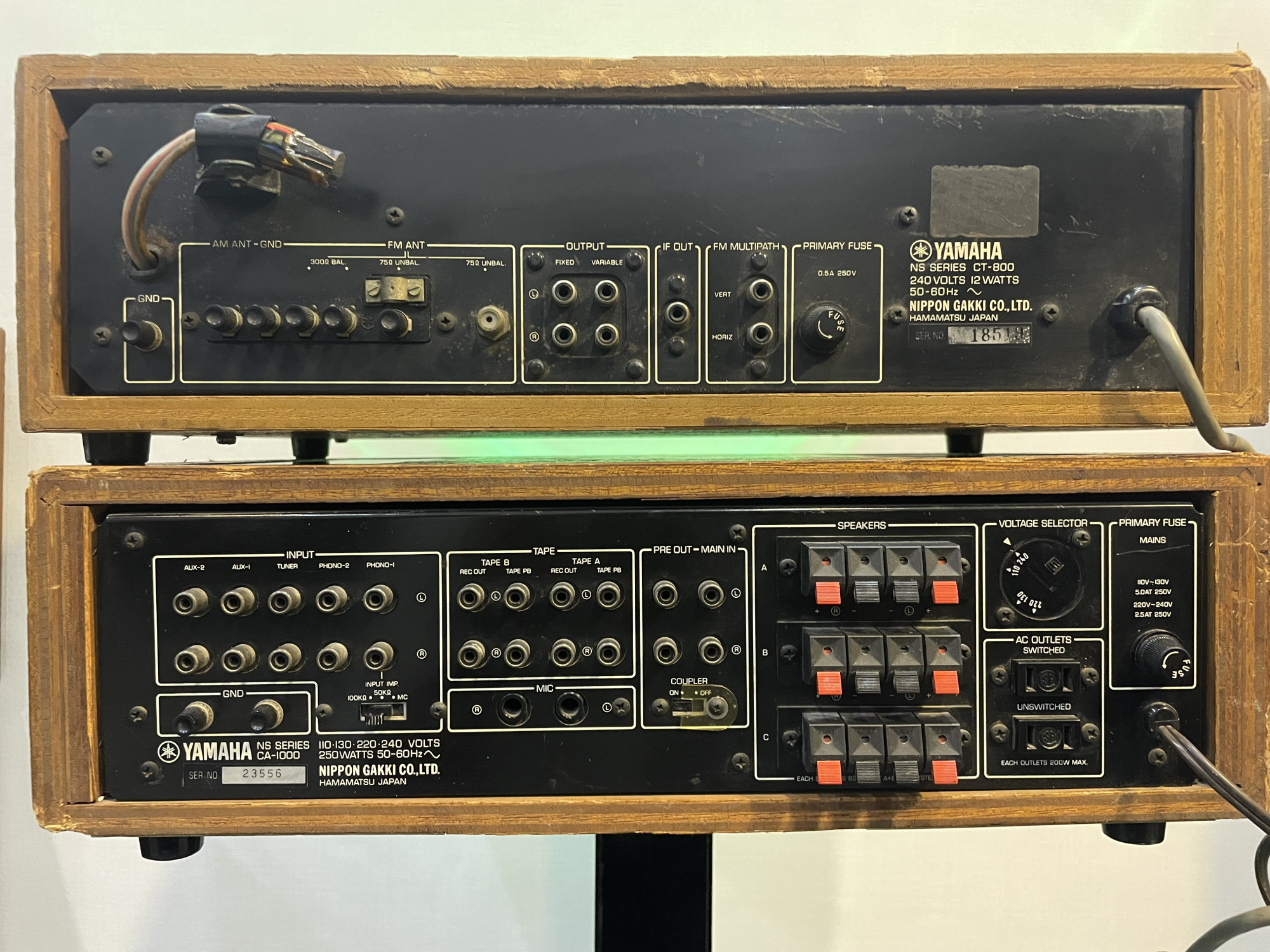Features:
- It’s an AM/FM stereo tuner made by Yamaha, from the 1970s.
- The frequency range for FM is standard 88-108 MHz; for AM (or MW) something like 525-1605 kHz.
- It uses good front-end circuitry: three low-noise dual-gate MOSFETs in the RF stages and mixer, which helps keep noise down.
- Tuner has an MPX circuit (for stereo decoding), typical of hi-fi gear of that era.
- It’s praised for “clear, voluminous sound” and good build quality.
- However, one downside is low selectivity (i.e. in crowded FM bands, with many stations close together, it might struggle to separate weak ones).
- As with many vintage tuners, condition matters (ang components, cleanliness of controls etc).
Yamaha CA-1000 (Integrated Amplifier)
General info / Features:- Manufactured circa 1973-1975.
- It’s an integrated amplifier (pre + power in one unit) with an interesting twist: Class A / Class B switch-over. That means you can choose to run it in Class A mode (lower distortion, more “warmth” and often more pleasing for sensitive ears but less power output and more heat) or switch to Class B mode (higher power, more efficient).
- In its standard (Class B) mode, spec’d around 70 W per channel into 8 Ω.
- Frequency response is wide: from about 10 Hz to 50 kHz.
- Distortion is very low at line level: THD figure around 0.01% in some specs.
- Damping factor ~70.
- Solid build: heavy, with a large power supply. Specs say maximum power consumption up to ~420 W, dimensions ~435×144×323 mm, weight ~15.5 kg.
- Age: capacitors, switches (especially the Class A/B switch), circuitry may have degraded, so service/ refurbishment is often required for optimal performance.
- In Class A mode the output power is much lower (because Class A is less efficient). If you need loud volume in a large room or with speakers that need more power, it might push you toward Class B mode.
How They Complement Each Other / Use-Cases
Putting them together:- The CT-800 is just a tuner. It won’t drive speakers, but it gets radio signals (AM/FM).
- The CA-1000 amplifies signals and powers speakers, and you could feed the tuner’s output into the CA-1000 to play radio through your speakers.
- For good radio sound: CT-800 + CA-1000 works well, giving both good tuning and good amplification.
- If you want one piece: CA-1000 is more versatile (you can use it for many sources), whereas CT-800 is specific to radio.

















